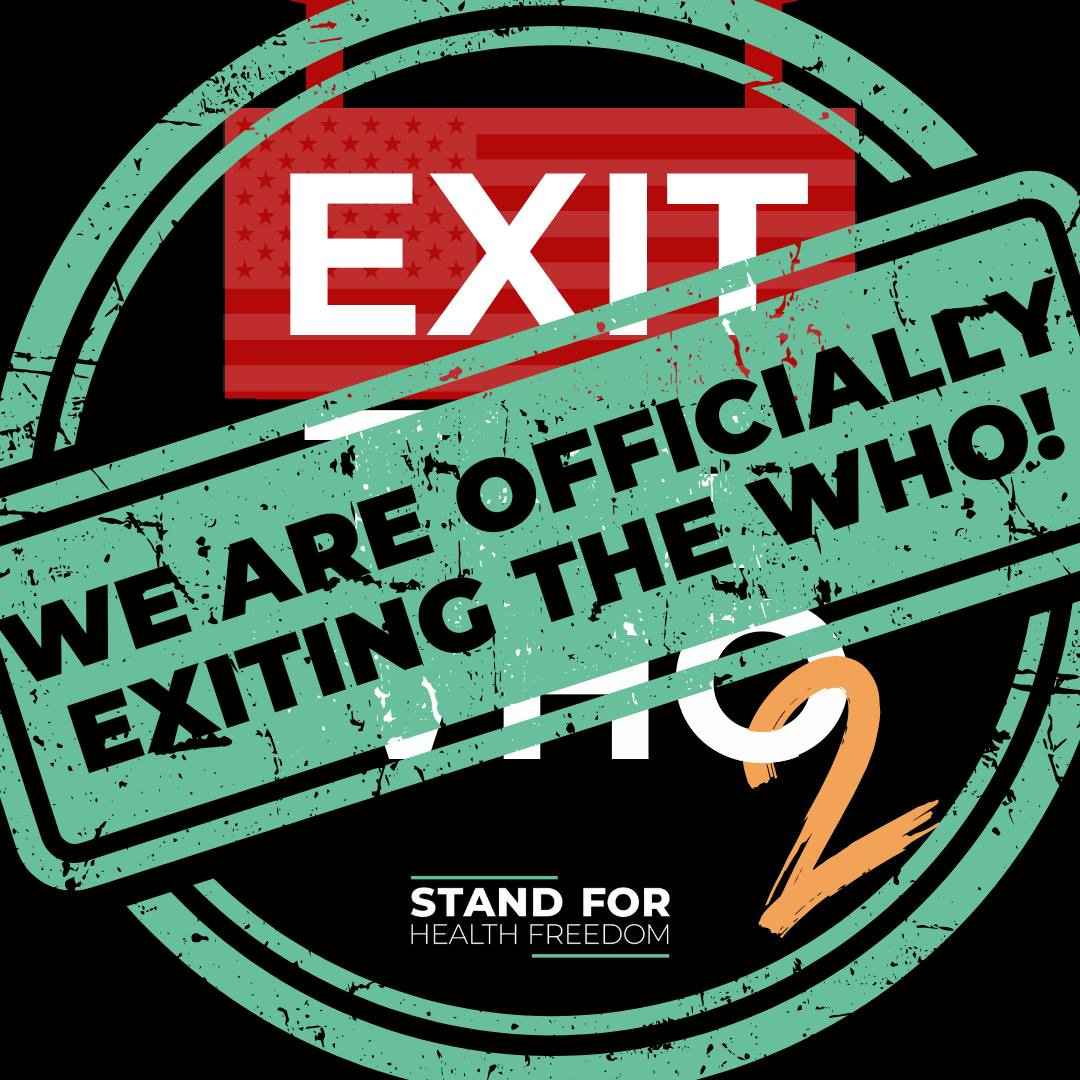The Legal and Constitutional Basis for Health Sovereignty: A Framework for Local, National, and Global Protection
As unelected global authorities assert sweeping power over individual health decisions, a quiet revolution is emerging—one rooted not in resistance alone, but in law, precedent, and principle.
Introduction: A Call to Defend Health Sovereignty
The right to health sovereignty—our fundamental ability to make informed, autonomous medical decisions without external coercion—stands as one of the most profound pillars of human dignity and self-determination. It is an inalienable right that anchors personal freedom, respects bodily autonomy, and protects individuals from overreach. And yet, in an era marked by centralized control over health systems, this right is under siege.
Global public health policies have shifted from empowering individuals to a system that increasingly dictates what is best for them, often disregarding the constitutional and human rights that safeguard personal freedom. This article presents a framework that demands a return to a health sovereignty model that respects individual rights, both on a personal and global scale. By revisiting the legal, historical, and philosophical underpinnings of health sovereignty, we assert that it must be enshrined and actively defended in every legal system—from local governments to global institutions.
1. The Constitutional Basis for Health Sovereignty in the United States
A. Historical Context: The Omission of Medical Freedom
When the U.S. Constitution was crafted, the framers had little reason to imagine a world where personal medical decisions would become a battleground of governmental overreach. In the late 18th century, medical practice was decentralized, largely left to states and communities, and governed by common law. Benjamin Rush, one of the Founding Fathers, foresaw the dangers of not explicitly protecting medical choice, warning that “medicine will organize into an undercover dictatorship” if left unchecked.
At that time, the federal government had limited scope, and the medical profession operated without the monopolistic control we see today. As such, the failure to codify medical freedom was not an oversight, but rather a product of its historical context. However, in the present age of growing federal authority, corporate influence, and global health governance, the explicit protection of health sovereignty within our constitutional framework has become a necessity.
B. Existing Constitutional Protections for Medical Autonomy
Although the U.S. Constitution does not explicitly mention medical freedom, several of its provisions support the right to make independent medical decisions when properly interpreted:
The First Amendment – Freedom of Thought & Religion
Guarantees the right to reject medical interventions based on religious, philosophical, or personal beliefs.
Protects health practitioners from censorship, allowing free expression and practice of diverse medical philosophies.
The Fourth Amendment – Right to Privacy & Bodily Integrity
Protects individuals from forced medical procedures, safeguarding the sanctity of personal bodily integrity.
Established legal precedents surrounding informed consent, where medical decisions cannot be made without the individual’s clear, informed agreement.
The Fifth & Fourteenth Amendments – Due Process & Equal Protection
Prevents the government from depriving individuals of their bodily autonomy without fair legal procedures.
Serves as a safeguard against coerced medical interventions and health mandates that lack due process.
The Ninth Amendment – Recognition of Unenumerated Rights
Affirms that rights not explicitly listed still exist and must be protected, including the right to bodily autonomy and medical freedom.
The Tenth Amendment – State Sovereignty Over Health Policy
Reinforces that health policy, a non-enumerated right, is primarily under the jurisdiction of states and localities, not the federal government.
These constitutional protections form a bedrock for asserting that medical freedom is an inherent right that must be upheld, even though it’s not explicitly enumerated in the Constitution.
C. Judicial Precedents on Medical Autonomy
Throughout U.S. legal history, there have been landmark cases affirming aspects of health sovereignty, although some inconsistencies remain:
Cruzan v. Director, Missouri Dept. of Health (1990): Affirmed the right to refuse life-sustaining medical treatment.
Roe v. Wade (1973) & Planned Parenthood v. Casey (1992): Established bodily autonomy as a privacy right, though these decisions were largely concerned with reproductive rights.
Jacobson v. Massachusetts (1905): Upheld state vaccine mandates but did not negate individual bodily autonomy—its use to justify broad public health coercion remains a point of contention.
Despite these precedents, the application of health sovereignty remains murky in many cases, underscoring the urgent need to explicitly define and protect this right at every level of governance.
2. Health Sovereignty at the State & Local Levels
A. The Role of States in Health Freedom
The Tenth Amendment reserves powers not delegated to the federal government to the states, positioning them as the primary protectors of health sovereignty. Several states have begun enacting laws that defend medical autonomy:
Collier County, Florida passed a Patient Bill of Rights, ensuring that citizens are protected from coercive medical practices.
Many states have passed laws that limit government overreach in areas like vaccine mandates and medical privacy.
These state-level protections are vital to preserving individual freedom, particularly when federal policies may infringe on personal health decisions.
B. The Local Model: Community-Led Health Autonomy
Local governance offers the most responsive, flexible means of safeguarding health sovereignty. Municipalities and counties can adopt:
Local Health Sovereignty Charters: Reinforcing informed consent as a foundational right within communities.
Independent Health Councils: Empowering local citizens to govern their health decisions and practices free from external interference.
By fostering community-led autonomy, local governments offer a powerful defense against overreach from higher levels of authority—be it state, federal, or global.
3. National Sovereignty in Healthcare: The Limits of Federal & Global Control
A. Federal Overreach & Medical Mandates
In recent years, federal agencies such as the CDC, FDA, and NIH have extended their influence over medical decisions. While these bodies are meant to offer guidance, their recommendations have often been treated as mandates, undermining both state and individual autonomy.
Moreover, the federal government has utilized funding mechanisms like Medicare and Medicaid to enforce compliance with national health policies, circumventing legislative oversight and pushing medical mandates without adequate checks and balances.
B. Global Health Governance & National Sovereignty
The World Health Organization (WHO) is currently advancing a binding pandemic treaty, targeted for finalization by May 2025, that would significantly expand its control over national health policies during declared public health emergencies. Key provisions include:
Granting the WHO legally binding authority to dictate global health responses, potentially overriding domestic policymaking.
Curtailing nations' ability to independently determine their own health strategies, shifting power to unelected international bureaucrats.
Public concern over this global overreach has spurred unprecedented civic engagement. Stand for Health Freedom alone helped facilitate:
436,950 emails to Congress
200,301 petition signatures
15,530 public comments to federal agencies
10,801 emails to state legislators
In response to this groundswell, the United States officially announced its withdrawal from the WHO, effective January 2026, citing deep concerns over sovereignty, transparency, and accountability (Presidential Action, Jan. 2025).
This moment marks a critical inflection point. To preserve democratic oversight and protect public health freedom, national sovereignty must be firmly reaffirmed in all future global health governance frameworks.
4. Global Cooperation Without Centralized Control
A. The Difference Between Cooperation & Authoritarianism
International collaboration on public health matters can be immensely valuable. However, it must be based on mutual respect, transparency, and voluntary cooperation—not authoritarian mandates. We need to establish cooperative, decentralized health networks that respect each nation’s autonomy while still enabling global collaboration.
B. A Global Health Sovereignty Framework
Rather than global governance imposing top-down control, we advocate for a model based on mutual respect for sovereignty:
A Universal Declaration of Health Sovereignty: Recognizing the right to informed consent as an international human right.
Independent Alliances of Sovereign Nations: Working together voluntarily, without compromising autonomy.
Parallel Health Networks: Reducing dependency on centralized institutions and fostering diverse, decentralized health approaches.
This model allows nations and individuals to retain control over their medical choices while participating in global cooperation.
Conclusion: Defending Health Sovereignty for Future Generations
Health sovereignty is not a fringe ideal. It is a cornerstone of human dignity, a necessary shield against tyranny, and a luminous thread in the tapestry of personal and collective liberty. The right to choose what enters our bodies, how we heal, and whom we trust in matters of life and death is not a privilege to be granted—it is an inalienable birthright.
And yet, that right is now under siege.
We have witnessed the steady erosion of bodily autonomy through expanding bureaucratic overreach, captured institutions, and unelected global actors assuming authority that no people ever granted them. We have seen how emergencies—manufactured or real—are used to justify the suspension of rights. We have heard the language of care used as the vehicle for coercion.
This article has laid the legal and constitutional foundation for restoring what has been lost. But the defense of health sovereignty must occur at every level:
Individual – Empowering personal autonomy in medical choices.
Local & State – Strengthening community-based protections against federal overreach.
National – Reaffirming constitutional safeguards against global governance.
Global – Creating a cooperative framework that respects sovereignty while fostering collaboration.
This is only the beginning.
In the next installment, we will explore how this framework can evolve into a living, breathing alternative to the failing top-down global health model. A vision where sovereignty is decentralized, consent is sacrosanct, and people—not systems—are once again placed at the center of health and healing.
Part Two: The Sovereignty-Centered World – A Vision for Bottom-Up Global Health and Governance….to be continued.











Lot of great things! Thank You Sayer! There are still issues though, which I'm not sure are touched upon here. For example this is extremely concerning, from https://news.stanford.edu/stories/2025/03/generative-ai-tools-global-health-care-low-income-countries
Gen AI’s potential to transform global medical care – and the ‘tension between the perfect and good’
quote: "The director of the Stanford Center for Digital Health shares insights on AI tools bridging health care gaps in low- and middle-income countries."
Sorry but I do NOT like any DIGITAL health for an 'analog' HUMAN!!!
One more:
"Recently, Linos and her research team at the center co-authored a report on generative AI’s application for health in low- and middle-income countries in collaboration with Isabella de Vere Hunt from Oxford and Sarah Soule, the incoming dean of the Graduate School of Business and the Stanford Center for Advanced Study in Behavioral Science, which she was leading during our research."
Maybe I'm too pessimistic, but having Ellison to deliver the UNIVERSAL genetic cancer 'cure' AFTER the genetically modifying global covid injections, is just too straightforward in order NOT to connect the dots... On top of it, if for example NOW the CORRUPT MD's are going to tell us, well, he SHEDDING is real, the spread of plasmids is real, AND the SV40 is actually 'contagious' thus cancer too, so now imagine: 'we need to treat you in order not to damage others'...
The 'cancer cure', which in fact is needed right now, is covid19-2.0 in my opinion.
Thank you Dr. Ji for reminding Americans that our Constitution protects our God Given Rights,the Constitution Protects those Rights! God Bless